An Angel in Fatigues
“Now don’t worry, you won’t be in any wars . . .”
- US Army recruiter’s promise to Ruby Bradley in 1933
In a little-known chapter of WWII and Korean War history, thousands of women served and sacrificed as nurses. Although often overlooked, their expertise, dedication, and courage under fire were an important part of America’s war efforts from 1941-1945 and again from 1950-1953.
Ruby Bradley, who was one of the most decorated women in US military history, was one of them.
The Day That Would Live In Infamy
Born on December 19, 1907, Ruby Bradley, a native of Spencer, West Virginia, was commissioned a 2ndLieutenant in the US Army Nurse Corps in 1934 and by early 1940 was stationed at a US military camp in the Philippines. For over a year, Bradley enjoyed her difficult but satisfying job as a hospital administrator at Camp John Hay, a beautiful installation in the highlands of Luzon Island, 200 miles from Manila.
On December 7, 1941, however, everything changed. Within hours of the attack on Pearl Harbor, Japanese Imperial forces also invaded the Philippines, dropping 70 bombs in the area of Camp John Hay. Over the next three weeks, American and Filipino troops fought valiantly against overwhelming Japanese forces but were eventually forced to retreat. In the chaos and destruction of the invasion, Bradley and thousands of other Americans were captured.
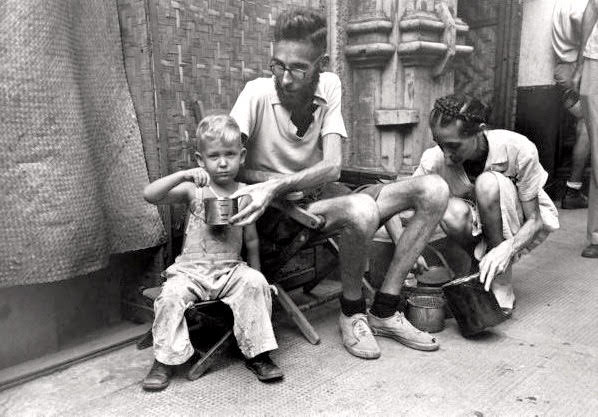
An emaciated father feeding Army rations to his son after he and his family were freed from a Japanese prison camp, Luzon, Philippines. February 05, 1945 (PC: Carl Mydans)
A Japanese POW Camp
For the next 37 months, Bradley, along with 76 other nurses (65 from the Army and 11 from the Navy) witnessed unimaginable horrors. People starved to death, died from disease, and simply lost the will to live. The 35-year-old nurse’s weight dropped to a dangerously low 84 pounds, and she was always hungry and tired. But she never gave up. “I knew I’d get through,” she said in an NBC news interview. “I was sure of it.”
It was during this time that Bradley and other nurses at the POW camps became known as “Angels in Fatigues” or ”Angels of Bataan.” Although exhausted and malnourished, the nurses administered medical treatment and care to hundreds of captured Americans, many of whom were civilians.
Bradley, however, took it a step further. Frequently risking her life to sneak medical supplies and instruments into the camp, she did whatever she could to help her fellow POWs.
During her three-year imprisonment, she assisted in 230 major surgeries and the delivery of 13 babies. She also made it a point to share her meager food provisions – just one cup of rice a day – with the children. "I'd save part of my food . . . for when they started crying," she told the Washington Post years later.
Despite Bradley’s best efforts, many of the captured Americans didn’t survive. "A lot of people died in the last few months," she remembered. "There were several deaths a day, mostly the older ones, who just couldn't take it."

A joyous Bradley (center, waving) after being released from Japanese imprisonment, 1945. (PC: NBC News)
Bradley and the other surviving POWs throughout the Philippines were liberated in February 1945.
Five years later, the Korean War broke out . . .
A Fearless Combat Nurse
Soon after North Korea’s invasion of South Korea in late June 1950, Bradley was again sent overseas. She would spend the next three years working in Korea and from 1951 to 1953 would serve as the Chief Nurse of 8th Army.
Along with hundreds of US Army, Navy, and Air Force nurses who served on hospital ships and MEDEVAC aircraft and with Mobile Army Surgical Hospital (MASH) Units, the field hospitals made popular by the 1970s comedy-drama TV series M*A*S*H, Bradley distinguished herself as a fearless combat nurse.
In one harrowing incident, thousands of Chinese soldiers attacked a US Army position. Within minutes they had surrounded an airstrip where wounded soldiers were being evacuated. “Everything was happening so fast,” Bradley said in an interview in 2000.
With enemy small arms fire and mortar rounds erupting all around her, she organized the evacuation of her patients, and in total disregard for her own life, helped load the wounded men into waiting planes.
After ensuring everyone was safely aboard, Bradley jumped on the last plane just as her ambulance burst into flames. “You can get out in a hurry when someone’s behind you with a gun,” she told NBC news.
Miraculously, Bradley survived the attack. When she returned to the States in 1953, her hometown honored her with a parade.
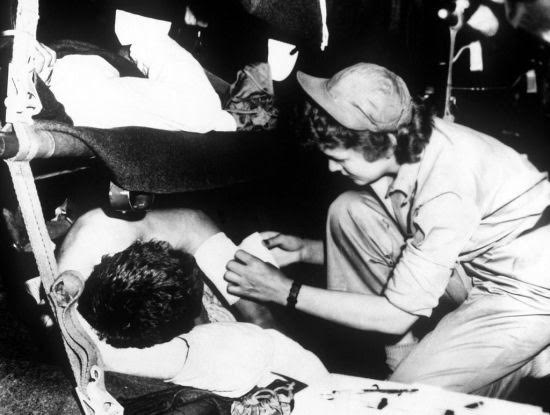
Flight nurse 2nd Lt. Pauline Kircher dresses a patient’s wounds during the flight from Korea to Japan, May 1951. (PC: U.S. Air Force)
Postscript
For her service in WWII and Korea, Bradley earned 34 medals, including two Legion of Merits, two Bronze Stars, and the International Red Cross’ Florence Nightingale Medal.
Despite all her accolades, Bradley always believed she was just doing her job. "I want to be remembered as just an Army nurse," she told a reporter in 1991. But, as those who benefited from her dedication and bravery would undoubtedly say, she was so much more.
Ruby Bradley, who never married, retired in 1963 after nearly 30 years in uniform. She died on May 28, 2002 at the age of 94.
During National Nurses Week, we pay tribute to Ruby Bradley and all the brave women who served and sacrificed in our country’s wars. We will always remember you!
Top/Feature picture: Nurses who were held as POWs in the Philippines leave for America on Feb. 20, 1945. Each nurse was awarded a Bronze Star for her bravery during captivity. (PC: US Army)
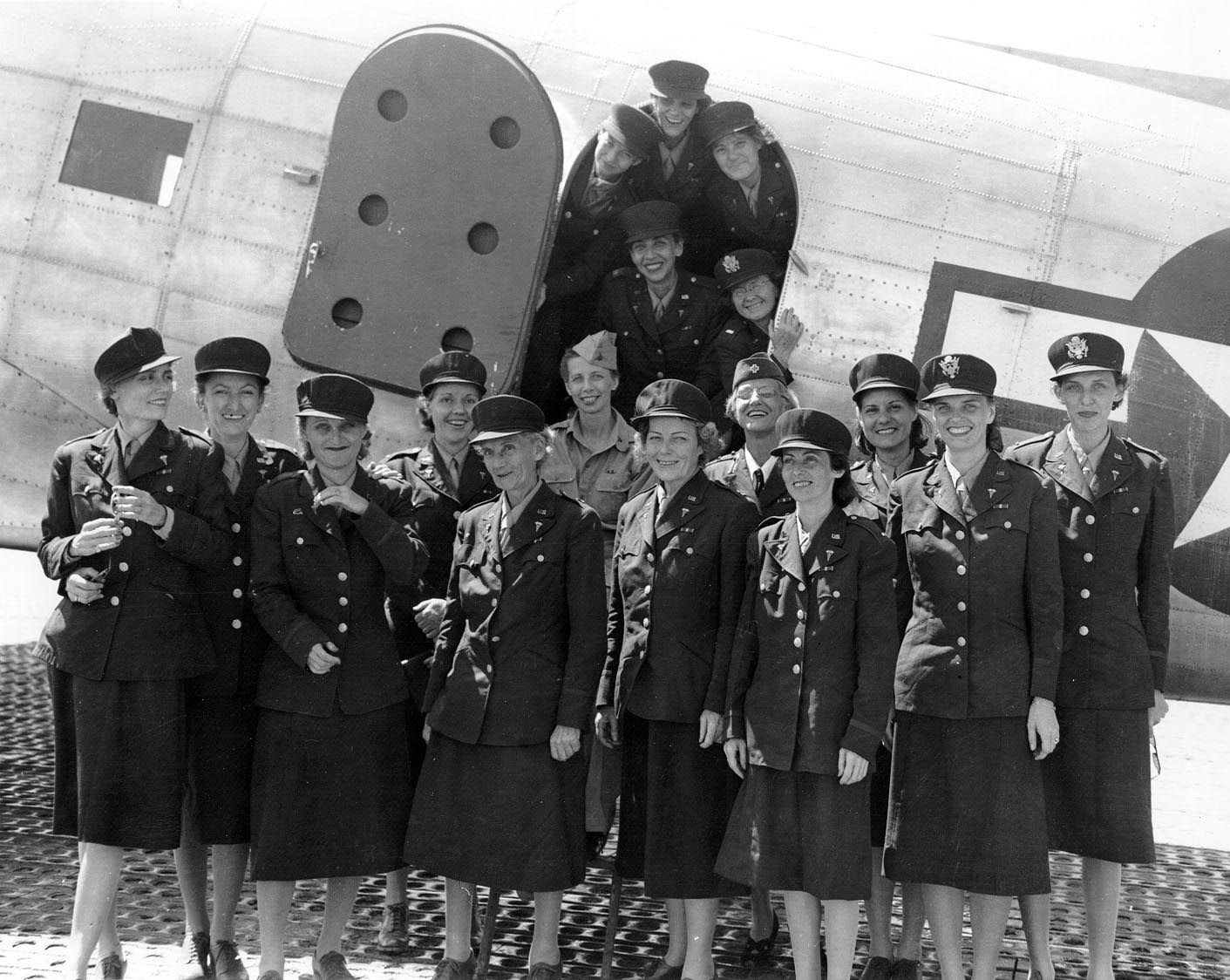
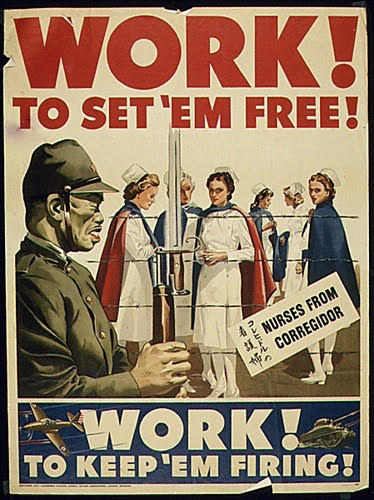
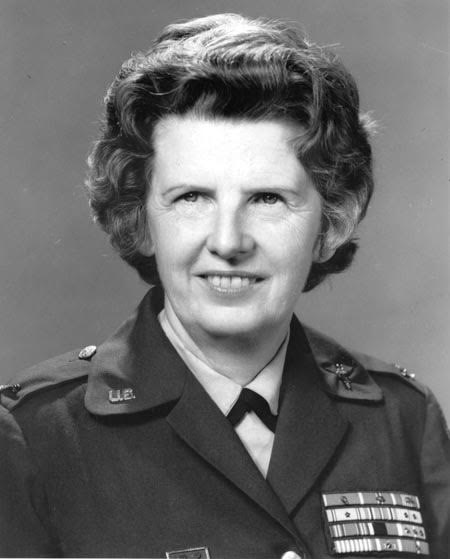
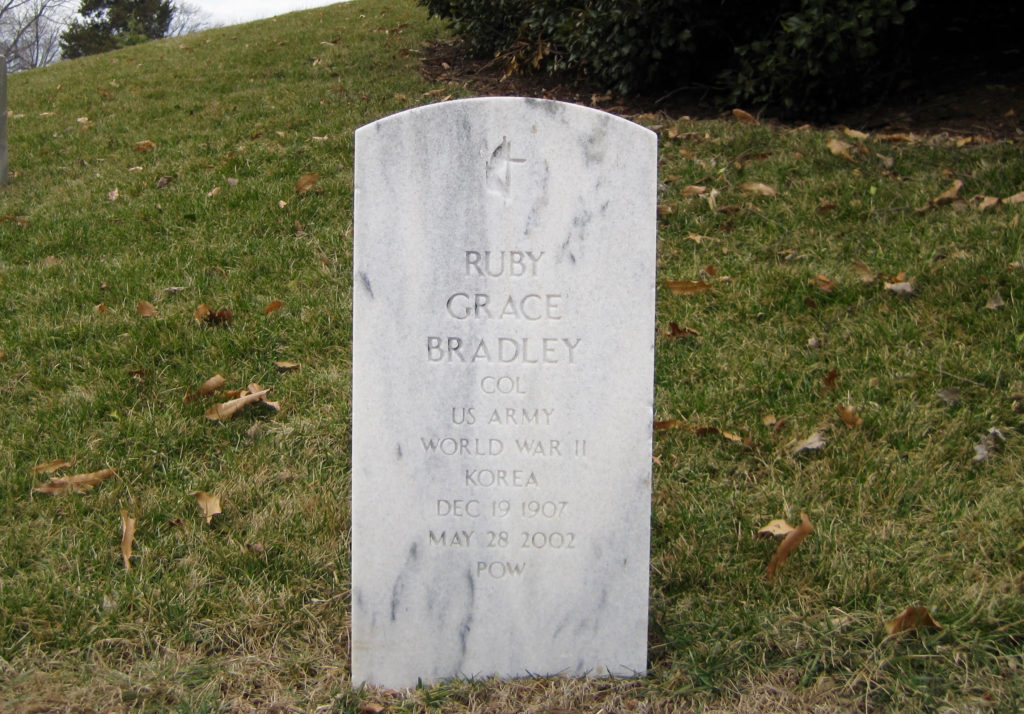
[…] A flight nurse dresses a patient’s wound, May 1951 […]
“Nurses who were held as POWs in the Philippines leave for America on Feb. 20, 1945.” Would you be so kind as to indicate the name of the ship that transported said nurses back to “America”?
Thanks for reading the blog and commenting, Richard.
I didn’t come across that information in my research, but you might take a look at “We Band of Angels” by Elizabeth Norman. You should be able to find it in there.
Hope this helps!
Salute to her who died for humun cause.my father was also in wwll initaly .wounded by bomb shell .he was nursed well .he came back well back home india.my father was sikh officer in british army.he was awarded two italy stars.
Thanks so much for reading the blog and commenting, Balijt.
It’s great to hear your dad’s story, and I salute him for his service during WWII.
Glad to know he survived his injury. The nurses definitely played an important role in the war!
We appreciate hearing from you.